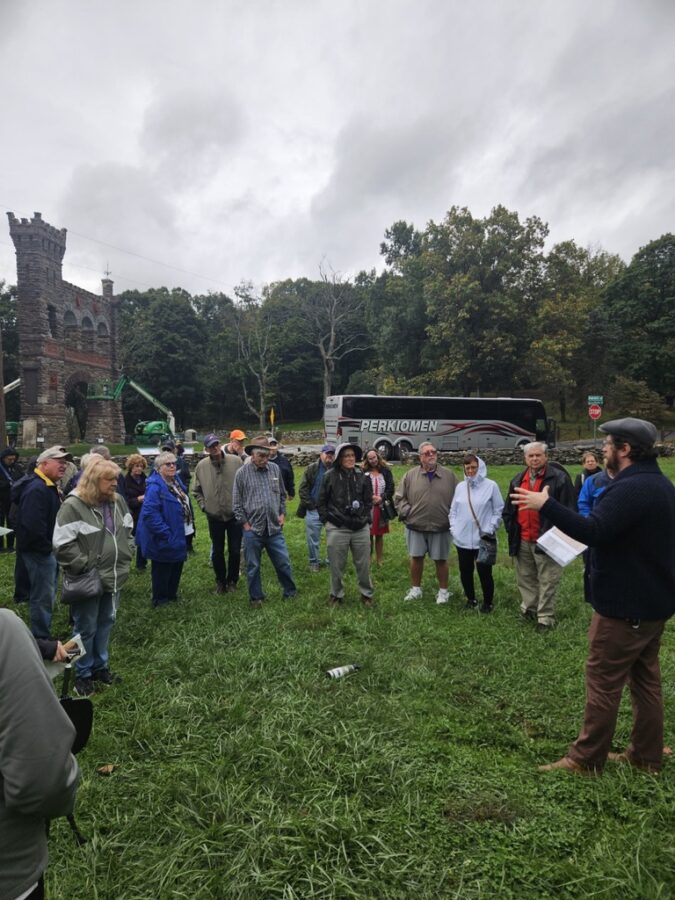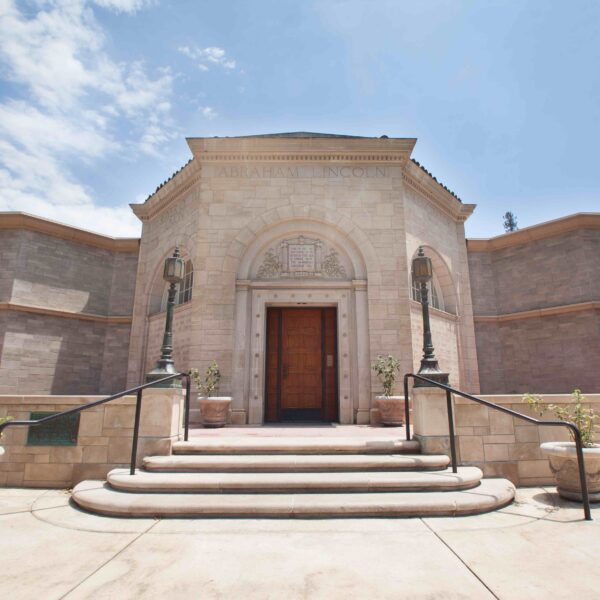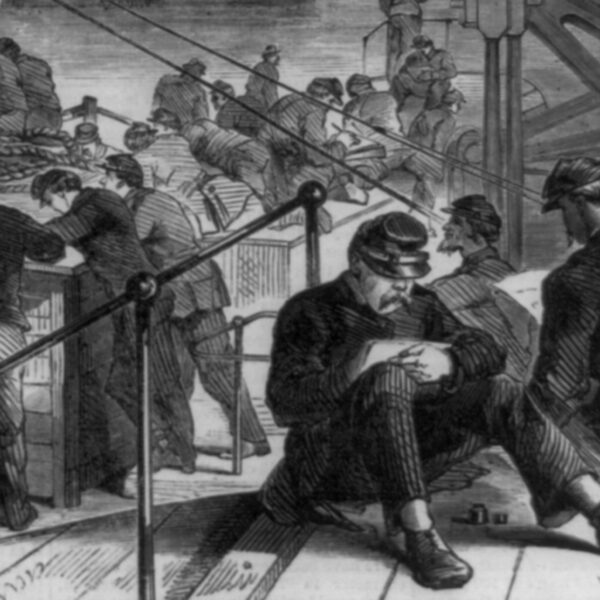 Dana Shoaf
Dana ShoafRich Condon (right) leads a recent tour at Campton’s Gap in Maryland.
How do historians interpret the dark periods of our past without ruffling a lot of feathers? The answer is they don’t. History is complicated, messy, and can leave those who study it closely in an uncomfortable—if also enlightened—state. The past has no obligation to us. Whether it is gleaned from the work of a public historian, an academic, a television show, a podcast, or a textbook, history is meant to draw our attention to the successes and challenges of the past while somehow illuminating a complete story. But who determines what that story looks like and what guides their choices? These questions cannot be answered simply.
While presenting “good” and “balanced” history to the masses, public historians have long had to navigate the hard past through the nuanced stories intertwined inside it. Whether the subject be slavery, the Civil War, Reconstruction, or the legacies of each, an objective interpretation is provided, allowing the audience the opportunity, and affording them the credit, to use history to inform their conclusions. Even so, interpretations evolve with the receipt of newly discovered primary source information, the dispelling of old myths, and the unending battle for historical truth. These days, the space contemporary historians must navigate to make their points can feel like a minefield sown with political polarization, social media and artificial intelligence, and personal bias.
Civil War history and adjacent subjects, for instance, have been hot topics of conversation in recent times. The 2015 murders of eight black parishioners and their pastor at Mother Emanuel AME Church by a white supremacist in Charleston, South Carolina, in particular, placed an increased focus on Confederate iconography and the living memory of its use in similar hate crimes. Even more so, Americans’ attention has been drawn to the legacy of violence in the country, including but not limited to the history of slavery, of fratricidal conflict, and of opposition to granting citizens their civil rights. So as historians, how do we interpret these complicated and often bloody events for present and future generations?
Though a strain of anti-intellectualism has made the jobs of both public and academic historians more challenging, there are still many opportunities for establishing connections between public audiences and the stories that define us. These opportunities are met by those who want to learn our complete history, perhaps now more than ever. As if we need any more reason to support our museums and historic sites, whether local, state, or federal, the exhibits, programs, and workshops they offer serve as powerful points of conversation and exploration, the likes of which are found in few other places. These institutions, in partnership with the (sometimes also besieged) classroom, allow for introspective and realistic examinations of our past: the good, the bad, the ugly.
During a recent commencement speech at Michigan State University, historian David Blight called attention to the opportunity for those in higher education to access “the dream of a life of the mind, at least for some stage of our lives, when we can learn the arts, the sciences, and … history.” He emphasized that this is “history in all of its triumphant and tragic complexity; not as a set of patriotic maxims, binding us in straitjackets as people in powerful high places would have it.” What Blight and so many other historians have advocated for is a full telling of history, especially the parts that force some of our fellow citizens to challenge their notions of the past. As a parting anecdote, Blight noted his experience as a young teacher, when the events of the 1960s and 1970s “had a great deal to do with what I came to study for the rest of my life.” Citing those times for his audience, he recognized the “country was coming apart for my generation even as we tried to simply be normal students, doing what students do and ignoring the world around us. But history never takes a day off, and when you are least expecting it, it comes for you. History, right now, is coming for you.” He encouraged those who seek their place in the historical community, reassuring them that “it’s a great time, I can say, to be a historian. Society seems to need us now.”
If we don’t have the ability to think critically and objectively about our history, or worse yet, face retribution for doing so, what can be the future of public history? This must be asked of those in the profession, but also by those who enjoy the fruits of historians’ talents, dedication, and labor. With the 250th anniversary of the founding of the United States on the horizon, the country should be pondering its past. Where did we start? Where did we go from there? How did we get here? These are among the questions posed by Americans who deserve a full telling of their country’s story; the answers will influence how the field of public history proceeds for the next 250 years. It is through these varied perspectives, diligently explored by educators and interpreters, that we can look backwards and try to understand not only our past, but see our future.
William Faulkner famously once said, “The past is never dead. It’s not even the past.” As historians—public, academic, and otherwise—further their work through the narrowing minefield of controversy, we must remember to stay the course. Though not in the same camp as Faulkner politically, activist and writer James Baldwin related to this sentiment. “History is not the past,” he asserted. “It is the present. We carry our history with us. We are our history.” To fully appreciate the present, however, we need full and unabridged access to our history.
Rich Condon is a public historian from Pittsburgh, Pennsylvania. He holds a B.A. in Public History from Shepherd University and is currently pursuing an M.A. in American History through Gettysburg College. For over a decade he has worked with a multitude of sites and organizations including The Battle of Franklin Trust, the National Museum of Civil War Medicine, Soldiers & Sailors Memorial Hall and Museum, and, since 2018, the National Park Service. He has written for Civil War Times, the American Battlefield Trust, and Emerging Civil War, and operates the Civil War Pittsburgh blog, which focuses on sharing stories related to Western Pennsylvania’s role in the conflict.




